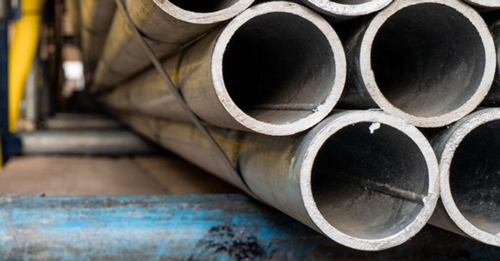EU-UK steel safeguard differences leave British producers exposed
16 June 2021 12:59

UK steelmakers will soon face stiffer competition from foreign rivals for products such as tin mill and wire rod, while facing continued limits on selling in their competitors’ markets.
Now that the EU and UK have separately concluded what should happen to their steel safeguards, which limit global imports and were due to expire this month, apparent differences in approach have potentially left some UK markets wide open.
The EU imposed a cap-and-tariff system on global imports in 2018 in response to US global steel tariffs known as the Article 232 action, which exacerbated a steel glut on world markets caused by excess production capacity.
When leaving the EU customs union at the start this year, the UK took its own safeguard with it, and now has reviewed whether to keep it after it is due to expire at the end of the month.
The UK has said it will continue measures. But of the 19 core categories of products investigated, just 10 are recommended for continued safeguard protection; the other nine would be discontinued. In total, 102 specific product codes are earmarked to be extended, and 135 discontinued.
Among the reasons for revoking the safeguard measure on these products are a lack of UK production, no increase or only a small increase in imports, and a lack of evidence that domestic industry would be harmed.
While the EU is yet to publish its findings, the European Commission intends to extend its safeguard for all products for a further three years, according to draft plans seen by MLex last week.
This means the EU and the US — the two largest markets for UK steel — will be able to enter the UK tariff-free for certain goods, while UK producers of the same products still face the US Article 232 tariffs and the EU safeguard.
Wire rod
This is illustrated in the market for wire rod, which will be removed from the UK’s safeguard, as investigators said there were no increased imports to justify keeping the measure.
European steelmakers, meanwhile, have highlighted wire rod as one of the most problematic markets. Foreign rivals such as Turkey frequently use their entire individual tariff-free quota for this product, sometimes within days of the quota’s release, and then eat into the quota for all countries.
If the UK’s wire rod market was suddenly tariff-free, Turkish producers might turn their sights more to British ports.
Further concerns for UK steelmakers are in the EU-US bilateral talks to mutually remove trade barriers. This means the US might allow EU makers to be exempted from its Article 232 limits, and the EU could decide to discontinue its safeguard, under certain conditions.
This is also something the UK hopes to achieve with the US, and the government has said it’s a priority, but no official announcements have been made on either talks; British companies worry that they could end up out in the cold.
Changes
Some of the UK's safeguard review outcomes have changed since reported in May. Following feedback to the Trade Remedies Authority's original findings, it has now U-turned on revoking measures for large welded tubes. The authority originally said it would remove the trade limits in the interest of downstream companies, but this is no longer the case.
In contrast, it will now revoke measures on stainless steel wire rod, as this would "hinder growth of downstream industries which use these products and would face increased costs if imports exceeded the allocated quota," according to the final recommendation published last Friday. There was only one producer of this rod in the UK, which investigators said was "supportive" of the change.
The UK Trade Remedies Authority published its final recommendation for the trade minister, who must decide whether to adopt it. This must be done before June 30 for the extension to become effective.
Related Articles
No results found
